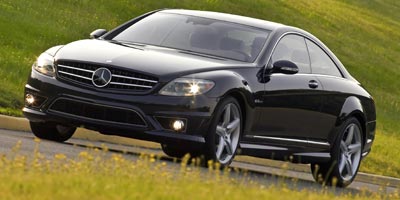When Infiniti's first G35 coupe stormed onto the scene in 2002, it proved a worthy alternative to BMW's 3 Series — the best you could get for $35,000 at that time. Now, as the new 3 Series reassumes control of the segment with a rip-snorting 300 horsepower in the 335i, it seems time for Infiniti to hatch the latest G.
That the redesigned G35 sedan already provided a compelling alternative to the 3 Series didn't matter. Infinitidecided against matching that car's 306-hp, 3.5-liter V-6, instead building a 3.7-liter engine for the appropriately named G37 coupe. The larger V-6 sends an estimated 330 hp to the rear wheels through a five-speed automatic or six-speed manual transmission.
Three trim levels are available: base, Journey and Sport 6MT, which is sold exclusively with the manual. Infiniti G37s hit dealerships in August 2007.
Exterior
The G37 looks much like you'd expect for a two-door offshoot of the new G35. The curvaceous body integrates large — but fairly subtle — fenders, while the bumper boasts one of the more sinister interpretations of the familiar air dam and side portals you see on many cars. Twin L-shaped headlights flank the slatted grille. The taillights aren't all that different from those on the previous G35 coupe.
Adding the Sport package to a G37 Journey gets you a sport-tuned suspension, exterior ground effects and massive 14-inch front disc brakes — the same size as those on a Corvette Z06. The Sport package also swaps the G37's standard 18-inch alloy wheels for 19-inchers. The G37 Sport 6MT includes all the enhancements standard.
Infiniti's 4-Wheel Active Steer system is optional on the Journey and 6MT. It turns the rear wheels as well as the front ones, which purportedly improves high-speed handling and makes it easier to turn at parking-lot speeds.
At 183.1 inches long and 71.8 inches wide, the G37 is nominally bigger than the 335i coupe. It's even a bit wider than the G35 sedan.
Interior
Apart from having a smaller backseat with room for two instead of three, the G37's cabin is not much different from that of the G35 sedan. The coupe's interior is a vast improvement over the first-generation G35, and now features such novelties as aluminum trim modeled after Japanese Washi paper.
Standard features include power front seats, automatic climate control, a six-speaker CD stereo and leather upholstery. Heated seats with power side bolsters, a moonroof and a navigation system with real-time traffic monitoring are optional.
Under the Hood
Sporting an elaborate air induction system similar to (no surprise) BMW's Valvetronic, the 3.7-liter V-6 makes an estimated 330 hp and 270 pounds-feet of torque. It teams with a five-speed automatic transmission in the G37 base and Journey, while the Sport 6MT gets a six-speed manual. Cars with the Sport package include a limited-slip differential for better traction while cornering.
Infiniti estimates that the G37's engine actually delivers around 1 mpg better gas mileage than the 3.5-liter V-6 in the G35. With the EPA's revised fuel economy ratings for 2008, that should translate into roughly 21 mpg in combined city and highway driving for a manual-equipped G37.
Safety
All G37s come standard with six airbags, including side-impact airbags for the front seats and side curtain airbags for both rows. Active head restraints, four-wheel-disc antilock brakes, traction control and an electronic stability system are also standard.
Infiniti's Intelligent Cruise Control, which can match highway speeds with the car ahead, is optional. It includes a Preview Braking function that preloads the brakes for faster response if the car in front slams on its brakes. Also optional are pre-crash seat belts that can tighten in response to emergency braking, as well as adaptive headlights that can swivel several degrees to better illuminate corners.


















